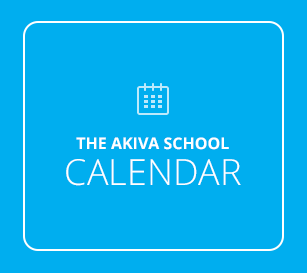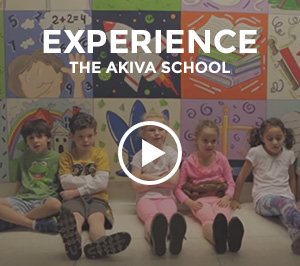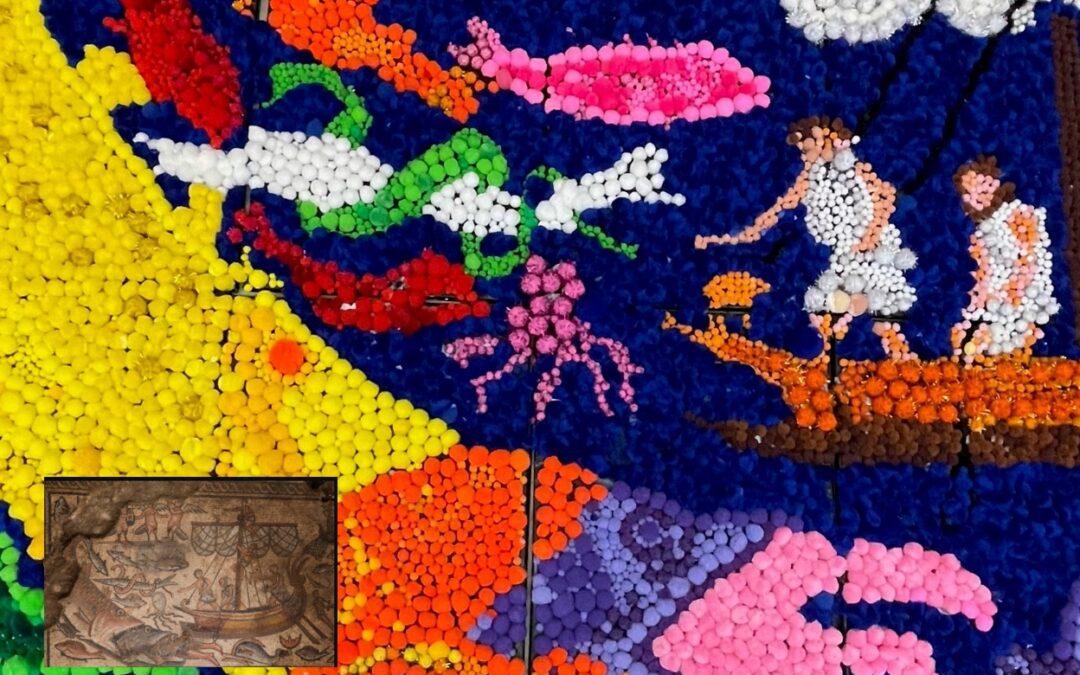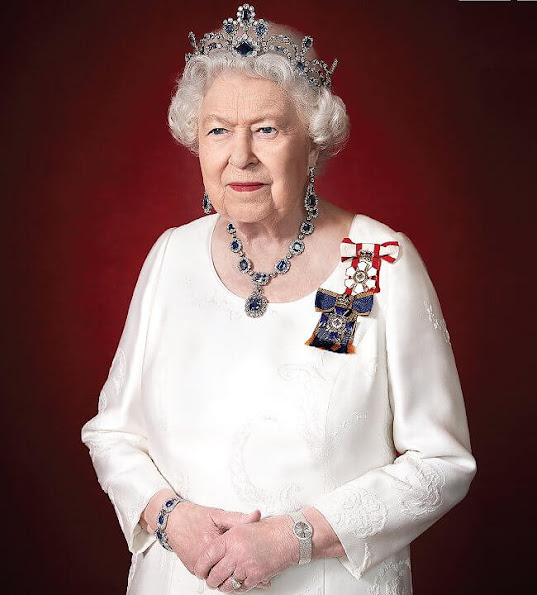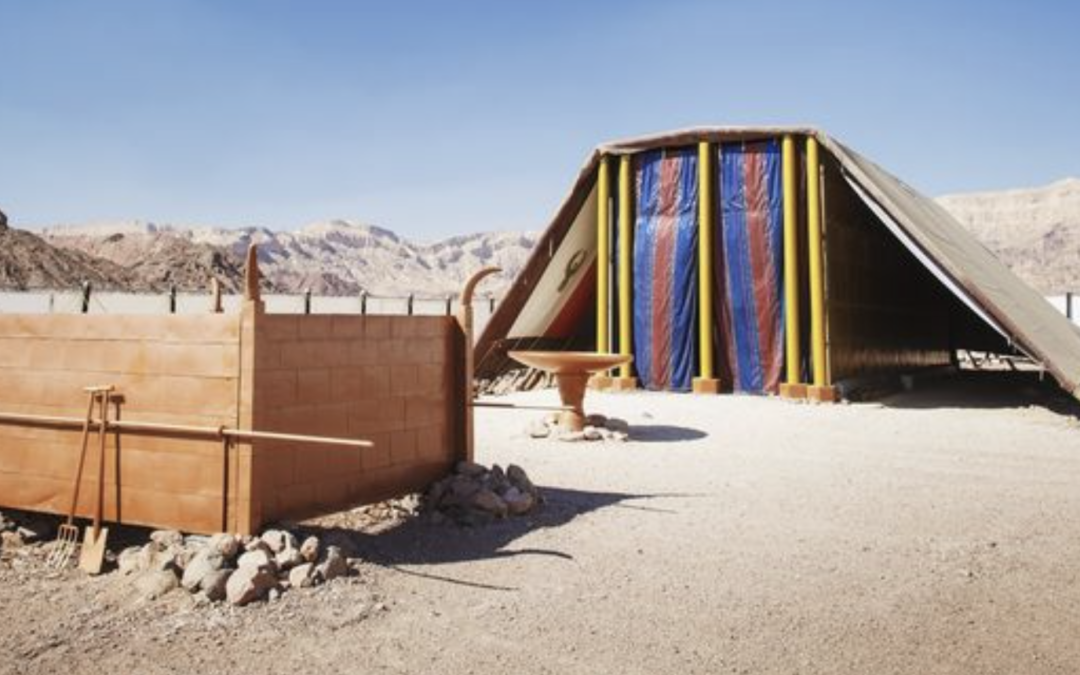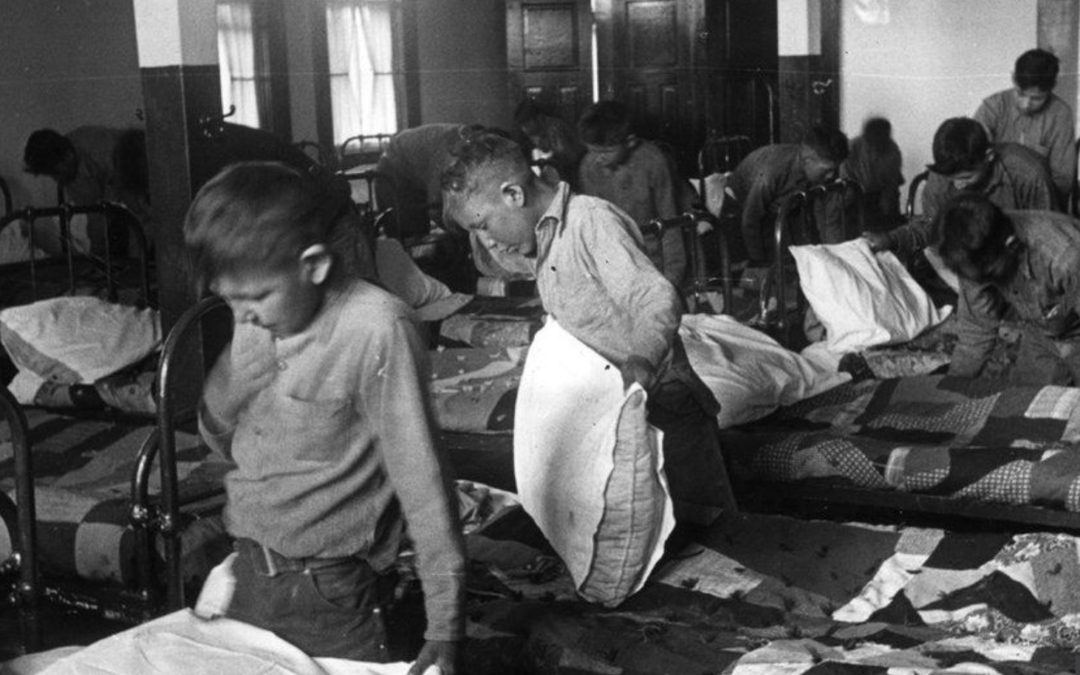
Rabbi Grossman, Head of School
I walked into our Kindergarten class while they were completing one of my favorite art projects, the Shabbat Box. A Shabbat Box is a shoebox-sized receptacle containing all of the basics for making Shabbat: A Kiddush cup, challah cover, booklet of blessings, candles and candlesticks. Shabbat Boxes are fun and useful for children who want to make or play Shabbat on their own, for families who have never made Shabbat before, and for people who are travelling and want to make Shabbat on the road.
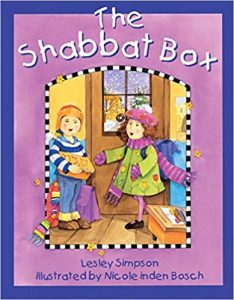
The Shabbat Box, by Lesley Simpson
The Shabbat Box was made popular by the eponymous 2001 children’s book by Leslie Simpson (see photo, inset). Our Kindergarten students read the book in class and were making their own Shabbat boxes to take home when I visited. In the book, a student named Ira brings home a Shabbat Box from school. Ira is devastated when he arrives at his house to find that the Shabbat box has fallen out of his backpack, and is lost. How Ira deals with the loss is a wonderful lesson in problem-solving and resourcefulness—I encourage you to read the book for yourself. No spoilers on Ira’s plan, but I will give away that the lost box is found by someone walking in the neighborhood and returned to a joyful Ira and his class.
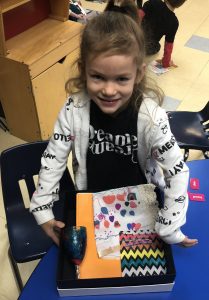
Our student with her returned Shabbat Box.
Two weeks ago, on Friday afternoon, I was in my office when there was a “knock” on the front door of our school. A woman entered and said that she lives in our neighborhood. While walking home that afternoon she had espied an object on the sidewalk with Hebrew writing on it and assumed it must belong to one of our students. I recognized it right away—it was the Shabbat Box! One of our Kindergarten students must have dropped it on the way home, and it was discovered and returned by someone walking in the area, just like in the book! Sometimes, life imitates art.
To compound the coincidence, our Akiva Shabbat Box story took place on Friday, October 26, the day of the Akiva Common Read. The Common Read is an Akiva tradition where, as a school, we celebrate the power of reading. Books have the power to influence life—though seldom in such a dramatic and fortuitous way like in our Akiva Shabbat Box story. More often, books inspire us to dream, to think differently, conquer new frontiers, and become better people. On Common Read day our entire student body reads the same book, and engages in activities that draw from the themes of the book.
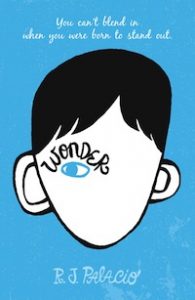
Wonder, by R. J. Palacio
This year our students read the book Wonder, a children’s book based on the popular book and movie of the same name. Wonder explores the theme of difference and inspires its readers to be kind to others. We thank our English Teaching Team that planned all of the activities of the day and are grateful to all of our teachers who shared the book with our students in three languages. Next time you are in our building, please take a moment to enjoy the artwork based on Wonder that adorns our halls.
The book Wonder begins with the thoughts of Auggie, a child who is sad when other children laugh at him because he does not “…look ordinary.” It ends with Auggie saying, “I know I can’t change the way I look, but maybe, just maybe…people can change the way they see.”
Books have the power to change the way we see, the way we act, and who we are. Books are a wonder.

